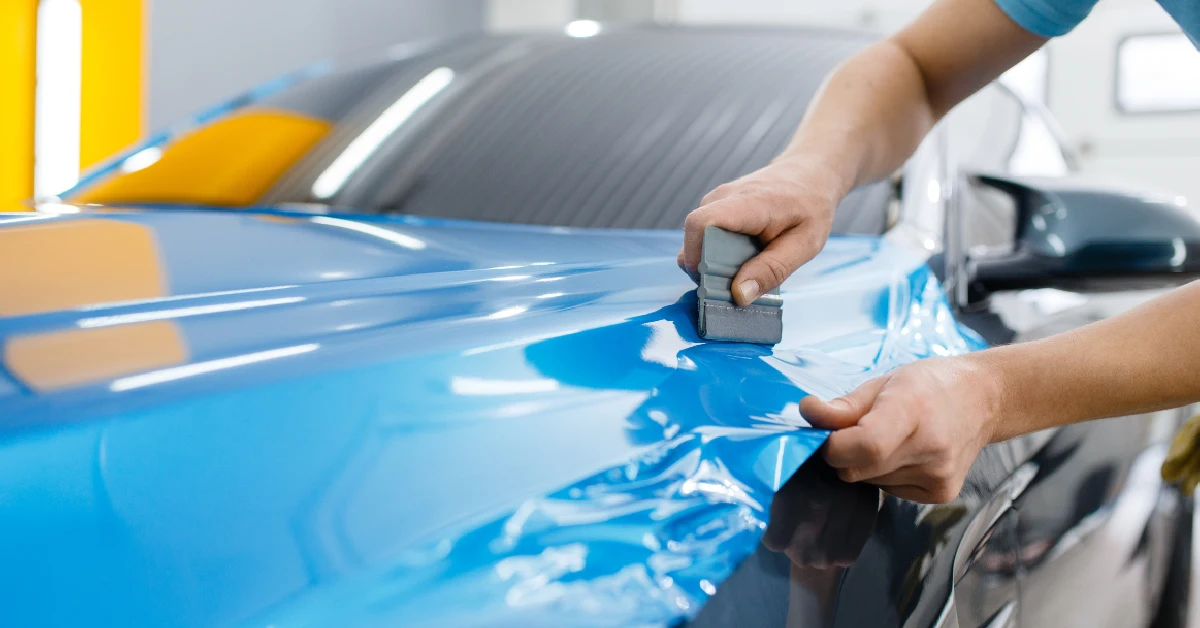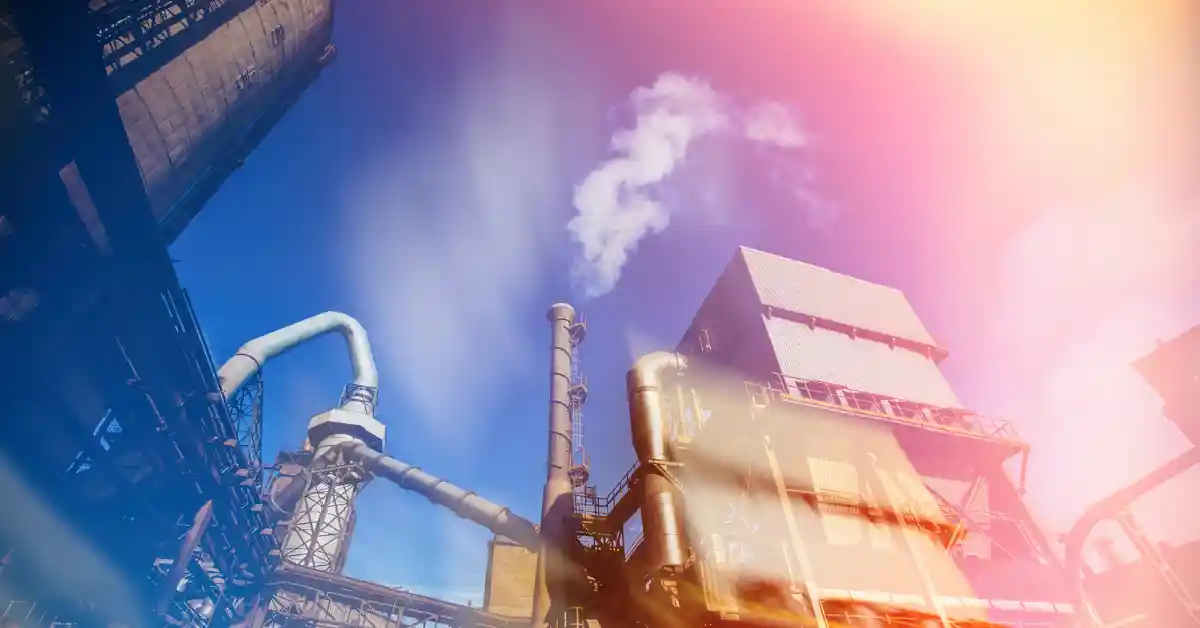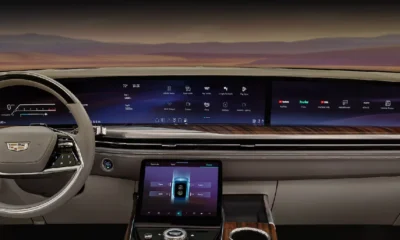Business
Branding on Cars: A Complete Guide to Boosting Your Business Visibility

Introduction
Branding on cars is becoming more and more popular among businesses, freelancers, and even individual entrepreneurs. Whether you’re a local business owner or running a nationwide service, using your vehicle as a mobile billboard is a smart way to get noticed. This strategy involves placing your business name, logo, contact details, or other branding elements directly onto your car. The idea is simple: turn everyday driving into a powerful marketing opportunity.
In today’s fast-paced world, people are always on the move, which means your vehicle has the potential to reach hundreds, if not thousands, of eyes every day. From full vehicle wraps to simple door decals, branding on cars comes in various styles to fit different budgets and goals. The best part? It’s a one-time investment that keeps working for you without any extra effort. In this blog, we’ll dive deeper into what branding on cars is, why it matters, how to do it step by step, and everything else you need to know.
What is branding on cars?
Branding on cars refers to the process of adding your business identity to your vehicle. This can include your company name, logo, slogan, website, phone number, or even social media handles. It’s a way of transforming your car into a moving advertisement that promotes your business wherever you go.
This method is especially popular among service providers like plumbers, electricians, food delivery services, real estate agents, and mobile businesses. The goal of branding on cars is to boost visibility, create a professional appearance, and build trust with potential customers.
There are different ways to apply branding on cars. You can choose from full vehicle wraps that cover the entire car with graphics, partial wraps, magnetic signs, or even window decals. The design depends on your budget, your brand image, and how much of the car you want to use for advertising.
In short, branding on cars is an effective and affordable way to advertise your business 24/7 without needing to pay for recurring ad space or airtime.
Why is branding on cars important?
Branding on cars plays a major role in boosting brand awareness and customer engagement. Here’s why it matters:
1. High Visibility
- Your car moves around the city, reaching thousands of people every day.
- Even when parked, it continues to advertise your brand.
2. Cost-Effective Marketing
- One-time cost compared to recurring ad payments.
- No monthly fees, unlike online or print ads.
3. Professional Look
- Makes your business look established and trustworthy.
- Builds confidence in potential customers.
4. Local Targeting
- Helps in reaching customers in your service area naturally.
- Perfect for small and medium-sized businesses.
5. Non-Intrusive Advertising
- Unlike online ads, branding on cars is subtle and doesn’t interrupt anyone’s activity.
- People see it without feeling like they’re being sold to.
Branding on cars is not just a smart idea, it’s a powerful tool to help your business stand out in a crowded market.
Step-by-step guide on branding on cars
Branding on cars can seem overwhelming at first, but it’s easier than it looks. Follow these simple steps:
Step 1: Define Your Branding Goals
- Decide what message you want your car to deliver.
- Choose what elements to include: logo, contact info, tagline, etc.
Step 2: Choose the Type of Branding
- Full wrap, partial wrap, magnets, or window decals?
- Pick based on your budget and how noticeable you want it to be.
Step 3: Design Your Graphics
- Hire a professional designer or use online design tools.
- Keep it bold, clear, and easy to read even from a distance.
Step 4: Find a Professional Installer
- Look for a local car wrapping or sign company.
- Check their reviews and ask to see samples of their past work.
Step 5: Installation and Maintenance
- Get the branding installed properly for a clean and lasting look.
- Wash your car gently and avoid pressure washing on decals.
With the right planning and care, branding on cars can deliver long-term results and solid brand exposure.
Advantages and disadvantages
Like any marketing strategy, branding on cars comes with its own set of pros and cons. Here’s what you should know:
Advantages
- Constant Exposure: Your car works for you all day, every day.
- Low Cost Over Time: Pay once and benefit for months or years.
- Brand Recognition: Helps people remember your business name.
- Trust Factor: Makes your business appear more established.
- Mobile Advertising: Reach people in different areas effortlessly.
Disadvantages
- Initial Investment: High-quality wraps or decals can be expensive upfront.
- Design Limitations: Your message has to be simple and clear.
- Wear and Tear: Over time, the wrap or decals may fade or peel.
- Legal Restrictions: Some places have rules about car advertising.
- Resale Issues: Removing branding can sometimes damage the car paint.
Understanding both sides will help you decide if branding on cars is right for your business.
Common FAQs on branding on cars
Q1: How much does branding on cars cost?
It depends on the size and type of branding. A full wrap may cost a few hundred to a few thousand dollars, while small decals or magnets are much cheaper.
Q2: How long does car branding last?
High-quality wraps can last 3 to 5 years or more with proper care. Decals and magnets may last a little less depending on weather exposure.
Q3: Can branding on cars damage my vehicle?
If done professionally, no. In fact, wraps can protect the original paint. But poor installation or low-quality materials might cause issues.
Q4: Is it legal to brand my personal vehicle?
In most places, yes. However, it’s always good to check local laws or homeowner association rules, especially if parking in residential areas.
Q5: Can I remove the branding later?
Yes, most wraps and decals are removable. A professional can help you remove them without damaging the paint.
Branding on cars is easy to understand, safe when done right, and very effective for business promotion.
Conclusion
Branding on cars is one of the most effective and affordable ways to promote your business every single day. It turns your car into a mobile advertisement that’s always working for you—whether you’re driving, parked, or even stuck in traffic. With just a one-time investment, your brand gains ongoing exposure without the need to keep paying for ad space.
This method is especially valuable for local businesses that want to increase visibility in their service areas. From plumbers and electricians to delivery services and real estate agents, many industries are seeing the benefits of vehicle branding. Plus, it makes your business look more professional and trustworthy.
However, it’s important to do it right. Planning, design, and professional installation all play a role in making the branding stand out. Make sure the message is simple and easy to read. Also, don’t forget to maintain your car well to keep your branding fresh.
In the end, branding on cars is a low-maintenance, high-reward marketing strategy. If you’re looking for a smart way to boost your brand presence, it might be time to take your business on the road—literally.
Bonus points on branding on cars
- Brand Consistency: Using the same colors, fonts, and logo on your car as you do on your website and social media builds trust and recognition.
- Employee Vehicles: If your business has multiple staff cars, branding them all creates a strong brand presence in your city.
- Event Marketing: Use your branded car during events, trade shows, or promotional days for extra visibility.
- Easy to Track: Add a specific phone number or link to track how many leads come from your vehicle branding.
- Eco-Friendly: Unlike printed flyers or digital ads that use energy and paper, branding on cars is a sustainable option.
- Seasonal Updates: You can update your vehicle branding with seasonal offers, discounts, or new services using temporary decals or magnets.
Thinking beyond the basics can help you get even more out of branding on cars.
Business
Fabrikanlage: The Future of Industrial Production and Innovation

Introduction
What is a Fabrikanlage, and why is it so important in today’s industrial world? A Fabrikanlage, translated from German as “factory plant” or “industrial facility,” refers to a complex system of machinery, production units, and infrastructure designed for large-scale manufacturing. It forms the backbone of modern industries, enabling mass production, advanced automation, and streamlined processes that drive economies forward.
In this article, we’ll take a deep dive into Fabrikanlage: its meaning, structure, importance, benefits, and future role in shaping industries. Whether you’re an entrepreneur, investor, or someone curious about industrial systems, this guide will give you clear insights into how Fabrikanlagen work and why they matter.
1. What is a Fabrikanlage?
A Fabrikanlage is more than just a factory. It is a complete industrial ecosystem where raw materials are processed, products are assembled, and innovation takes shape. Modern Fabrikanlagen combine machinery, robotics, digital systems, and skilled labor to create efficient production lines. They are designed not only for output but also for adaptability, cost-effectiveness, and sustainability.
More Article Here
2. Key Components of a Fabrikanlage
Every Fabrikanlage consists of multiple essential parts:
-
Production Units: The heart of the plant where manufacturing takes place.
-
Storage Facilities: Warehouses for raw materials and finished goods.
-
Logistics Systems: For transport within and outside the plant.
-
Automation and Robotics: Machines that handle repetitive tasks.
-
Control Rooms: For monitoring operations and efficiency.
-
Safety Infrastructure: Fire systems, ventilation, and worker safety measures.
3. The Evolution of Fabrikanlagen Over Time
Historically, factories relied heavily on manual labor. The first industrial revolution brought steam power, followed by electricity and assembly lines. Today, the modern Fabrikanlage integrates Industry 4.0 technologies such as:
-
Artificial intelligence
-
IoT-enabled machines
-
Predictive maintenance systems
-
Smart robotics
-
Digital twins for simulation
This evolution makes Fabrikanlagen more productive, flexible, and competitive.
4. Importance of Fabrikanlagen in Modern Industries
Fabrikanlagen are the backbone of economic growth. They:
-
Create jobs and economic opportunities.
-
Enable large-scale production to meet global demand.
-
Foster innovation by incorporating new technologies.
-
Support export and international trade.
-
Drive cost-efficiency for businesses.
5. Types of Fabrikanlagen
Different industries use different Fabrikanlagen:
-
Automotive Fabrikanlagen – Large-scale car manufacturing plants.
-
Pharmaceutical Fabrikanlagen – Facilities for producing medicines.
-
Food Processing Fabrikanlagen – Factories that package and process food.
-
Electronics Fabrikanlagen – For assembling gadgets and devices.
-
Textile Fabrikanlagen – Large units for clothing and fabric production.
6. Role of Automation in Fabrikanlagen
Automation is revolutionizing Fabrikanlagen by reducing manual errors and increasing speed. With AI-powered machines, companies can:
-
Reduce costs.
-
Improve quality control.
-
Optimize production flow.
-
Operate 24/7 without downtime.
Robotics and automated conveyors make Fabrikanlagen smarter and more efficient.
7. Designing an Efficient Fabrikanlage
Key design principles for a successful Fabrikanlage include:
-
Layout Planning: Smooth material flow without bottlenecks.
-
Energy Efficiency: Using renewable energy sources.
-
Scalability: Space for future expansion.
-
Workforce Safety: Ensuring ergonomic and safe conditions.
-
Digital Integration: IoT, sensors, and monitoring systems.
8. Sustainability and Green Factories
Sustainability is no longer optional. Modern Fabrikanlagen are moving towards eco-friendly practices such as:
-
Solar and wind-powered plants.
-
Recycling industrial waste.
-
Water conservation systems.
-
Carbon footprint reduction strategies.
These measures not only protect the environment but also improve brand reputation.
9. Benefits of Fabrikanlagen for Businesses
-
High Productivity: Faster production at lower costs.
-
Consistency: Uniform quality across products.
-
Flexibility: Adaptable to market demands.
-
Innovation: Integration of cutting-edge technology.
-
Competitiveness: Ability to serve global markets efficiently.
10. Challenges in Managing a Fabrikanlage
Running a Fabrikanlage comes with challenges:
-
High initial investment costs.
-
Maintenance of complex machinery.
-
Training workers for advanced systems.
-
Environmental regulations.
-
Global supply chain disruptions.
11. Comparison Chart: Traditional vs. Modern Fabrikanlagen
| Feature | Traditional Fabrikanlage | Modern Fabrikanlage |
|---|---|---|
| Labor Dependence | High manual labor | Automated & AI-driven |
| Energy Usage | Fossil fuels | Renewable & efficient |
| Production Speed | Slow, batch-based | Fast, continuous flow |
| Quality Control | Manual checks | Automated precision systems |
| Flexibility | Rigid setups | Scalable & adaptable |
| Environmental Impact | High emissions | Eco-friendly processes |
12. The Future of Fabrikanlagen
The future of Fabrikanlagen lies in smart factories powered by digital technologies. Expect to see:
-
Full automation with minimal human intervention.
-
AI-driven decision-making.
-
Blockchain integration for supply chain transparency.
-
Energy-neutral factories using 100% renewable sources.
-
Advanced robotics that collaborate with humans.
These advancements will redefine global manufacturing.
13. FAQs About Fabrikanlage
Q1: What does Fabrikanlage mean?
A Fabrikanlage means factory plant or industrial facility designed for mass production.
Q2: How do modern Fabrikanlagen differ from traditional ones?
Modern Fabrikanlagen use automation, AI, and eco-friendly technologies, while traditional ones relied mostly on manual labor.
Q3: Why are Fabrikanlagen important for businesses?
They improve efficiency, lower costs, and make global-scale production possible.
Q4: Can Fabrikanlagen be environmentally friendly?
Yes, modern designs use renewable energy, recycling systems, and sustainable materials.
Q5: What industries rely most on Fabrikanlagen?
Automotive, electronics, pharmaceuticals, textiles, and food industries depend heavily on Fabrikanlagen.
Conclusion
A Fabrikanlage is more than a factory—it’s a powerhouse of innovation, production, and sustainability. From automotive to pharmaceuticals, every industry depends on Fabrikanlagen to meet growing global demand. As automation, digitalization, and sustainability transform industries, Fabrikanlagen will remain at the heart of industrial progress.
Investing in smart, eco-friendly Fabrikanlagen is not only about efficiency but also about building a future-ready business that thrives in the modern world.
Business
Mopsul: The Future of Logistics Excellence

In a world where global trade accelerates daily, smart logistics providers stand out by blending speed, reliability, and technological ingenuity. Mopsul emerges as one such name—short, memorable, and full of promise. But what exactly is Mopsul? Why is it capturing attention in the logistics domain? And what differentiates it in a crowded landscape?
In this article, we’ll dive deep into Mopsul’s essence, services, competitive strengths, challenges, and future trajectory. You’ll gain valuable insights whether you’re a business owner, operations manager, or someone curious about logistics innovation.
What Is Mopsul?
Mopsul is a logistics and freight services enterprise that positions itself as a bridge between global marketplaces and local destinations. At its core, Mopsul offers:
-
Freight forwarding across air, sea, and ground channels.
-
Customs clearance and regulatory compliance support.
-
Warehousing and distribution, including inventory management.
-
Last-mile delivery solutions.
-
Value-added services, such as packaging, insurance, and tracking systems.
Unlike standalone carriers or simple couriers, Mopsul aspires to be a full-spectrum logistics partner—taking responsibility from origin to final delivery.
More Article Here
Why Mopsul Matters in 2025
-
Rising global trade complexity
Tariffs, supply chain disruptions, regulatory changes—these create friction. Firms like Mopsul that integrate compliance and visibility help mitigate risk. -
Demand for transparency & tracking
Modern customers demand real-time tracking, updates, and accountability. Those logistics companies that can layer in such digital control gain trust. -
Scalability for SMEs
Small and medium enterprises often struggle to access robust international logistics. Mopsul’s model can scale to serve both large clients and SMEs. -
Sustainability pressures
Governments and consumers push greener supply chains. Mopsul can differentiate itself by investing in low-emission routing, carbon offsets, and energy-efficient warehousing.
Core Services Breakdown
Below is a comparison chart summarizing key service attributes that Mopsul offers (or aspires to offer) relative to generic logistics models:
| Service Component | Typical Logistics Provider | Mopsul’s Approach (Ideal/Strategic) |
|---|---|---|
| Freight forwarding modes | Focus on either air, sea, or land | Multi-modal integration combining all three |
| Customs & compliance | Acts via third-party brokers | In-house compliance teams to reduce delays |
| Warehousing | Simple storage space | Smart warehousing with real-time inventory dashboards |
| Technology & tracking | Basic tracking via 3rd-party systems | Proprietary tracking + APIs integrating with client systems |
| Last-mile delivery | Outsourced to local couriers | Hybrid or own network to ensure consistency in final leg |
| Value-added services | Limited to packaging or insurance | Holistic packaging, labeling, insurance, returns handling |
| Pricing & transparency | Hidden surcharges common | Transparent fee structure, dynamic quoting |
| Sustainability efforts | Minimal or ad hoc | Dedicated “green route” options, carbon reporting |
This chart gives you a snapshot of where Mopsul aims to excel compared to conventional logistics firms.
Competitive Advantages of Mopsul
1. Integrated Visibility & Digital Control
Mopsul’s ability to provide end-to-end digital tracking—from warehouse scan to final delivery—gives clients much more transparency than fragmented logistics chains.
2. Flexible Multi-Modal Routing
Because it handles air, sea, and land shipments, Mopsul can optimize each leg of a shipment for cost, speed, or environmental impact. This flexibility is a major plus.
3. Scalability for SMEs & Corporations
While many logistics firms cater only to large shippers, Mopsul can tailor services for smaller players who want enterprise-level treatment without paying enterprise prices.
4. Proximity to Local Networks
By forging strong regional partnerships (or owning regional assets), Mopsul can ensure smoother local operations—reducing bottlenecks in customs, last-mile delivery, or warehousing.
5. Focus on Innovation & Sustainability
In a future where logistics must respond to climate mandates and consumer expectations, Mopsul’s commitment to greener operations can be a differentiator.
Challenges & Risk Factors
It’s not all smooth sailing. Mopsul (like any logistics venture) faces multiple challenges:
-
Capital intensity: Warehouses, vehicles, tech systems—these are expensive to build and maintain.
-
Regulatory complexity: Customs, trade rules, import/export licensing differ by country and evolve frequently.
-
Competition from giants: Established logistics giants have scale, brand, and existing networks.
-
Operational reliability: Delays or damaged goods can hurt reputation quickly.
-
Sustainability costs: Greener operations often come with higher upfront costs or slower ROI.
To succeed, Mopsul must invest wisely, partner strategically, and maintain service quality consistently.
Customer Use Cases & Success Stories (Hypothetical Examples)
Case A: E-Commerce Exporter to Remote Markets
A small e-commerce business in Southeast Asia wants to export specialty craft goods to remote regions in South America. Traditional freight options were patchy, with delivery uncertainty. Mopsul stepped in, coordinating sea to regional hub, then ground and local carrier for last-mile. Tracking dashboards kept the e-commerce seller informed at each leg. As a result, the business expanded its reach into new markets, improved delivery reliability, and reduced losses due to mishandling.
Case B: Seasonal Retailer Needing Peak Capacity
A fashion brand in Europe must scale up logistics during holiday season. Mopsul provided flexible warehousing on short notice, ramped up transport capacity via air and land, and offered predictive forecasting to optimize stock distribution among fulfillment centers. The brand avoided overstock bottlenecks and met customer expectations even during peak demand.
These scenarios illustrate how logistical complexity becomes manageable when a provider like Mopsul orchestrates every leg.
Best Practices & Strategies When Working with Mopsul
If you engage Mopsul (or any integrated logistics partner), here’s how to maximize value:
-
Share forecasting and demand patterns early. The more your provider knows, the better they can optimize routes, buffer inventory, or scale resources.
-
Integrate your systems. Use APIs or data exchange so that your order system, inventory, and shipping system all talk to Mopsul’s logistics engine.
-
Agree on KPIs and SLAs upfront. On-time delivery rates, damage rates, lead times—these should be measurable, agreed, and monitored.
-
Negotiate flexible contracts. Allow room for volume fluctuations or route adjustments during unexpected surges.
-
Request sustainability reporting. If Mopsul tracks emissions, offsets, or green routes, demand periodic reports to assess the environmental impact.
-
Plan for contingencies. Prepare alternate routes or backup suppliers in case of port congestion, geopolitical issues, or regulatory shifts.
The Future of Mopsul & Logistics Innovation
Looking ahead, here are some trends and directions Mopsul (and the broader logistics field) must watch:
-
AI & predictive routing — Using data to forecast demand, optimize capacity, and route in real time.
-
Autonomous vehicles and drones — For remote or last-mile delivery, where human drivers are inefficient.
-
Blockchain for supply chain trust — Immutable logs can improve transparency in complex multi-party shipments.
-
Green operations — Electric fleets, solar-powered warehouses, carbon offsetting integrated into pricing.
-
Hyperlocal micro-fulfillment — Mini-warehouses in urban cores that allow ultra-fast delivery windows.
-
Collaborative logistics networks — Shared capacities across businesses to reduce empty runs and boost efficiency.
If Mopsul invests in these areas, it can stay ahead of the curve and become a logistics leader of tomorrow.
FAQs (Before Conclusion)
1. What does the name “Mopsul” mean?
The name is unique and brandable. While there’s no single word-dictionary meaning, in the logistics context it comes to signify efficiency, connectivity, and modern service.
2. How is Mopsul different from standard courier services?
Unlike simple couriers, Mopsul handles every stage—freight forwarding across modes, customs, warehousing, and final delivery—offering a unified solution.
3. Can small businesses use Mopsul?
Yes. One of Mopsul’s strategic advantages is supporting small and medium enterprises by offering scalable logistics at more accessible levels.
4. Is Mopsul suited for perishable or high-value goods?
With proper cold-chain and security measures, Mopsul can handle perishable, fragile, or high-value shipments—assuming they integrate specialized services and controls.
5. What regions does Mopsul serve globally?
While the precise regions depend on Mopsul’s buildout and partnerships, its ambition is global: intercontinental freight, regional hubs, and local last-mile coverage.
Conclusion
In the evolving landscape of global trade, choosing the right logistics partner is more than a cost decision—it’s critical for competitiveness, customer experience, and scalability. Mopsul presents a compelling proposition: end-to-end integration, digital transparency, adaptability for growing businesses, and forward-looking innovation.
If you’re evaluating logistics providers or planning expansion, Mopsul deserves serious consideration. Its approach blends the best features of freight forwarding, warehousing, and last-mile delivery into a cohesive, modern service. As global commerce becomes more complex, partners like Mopsul will likely be at the forefront—bridging continents, smoothing supply chains, and delivering value.
Business
Fiannaças: Mastering Money with Confidence and Clarity

Introduction
Money is more than currency — it’s a tool, a mindset, and a pathway to freedom. But too many people feel overwhelmed, unsure, or even intimidated by financial choices. What if there were a clear, memorable framework to guide you? That’s where Fiannaças comes in.
In this article, we explore Fiannaças from the ground up: what it is, why it matters today, how to apply it in personal and business life, and how it can help you gain control, confidence, and growth. Expect practical tips, comparisons, and insights drawn from current finance trends. Let’s dive in.
What Is Fiannaças?
“Fiannaças” combines the feel of “finance” with an aspirational twist. Think of it as your personal financial philosophy — a holistic system comprising mindset, tools, strategy, discipline, and growth orientation.
While not a traditional term, Fiannaças represents:
-
Foresight — planning ahead
-
Intelligence — understanding money mechanics
-
Accountability — tracking and discipline
-
Nurturing — protecting and growing assets
-
Adaptability — adjusting to change
-
Networking & Knowledge — leveraging community and learning
-
Action — taking consistent steps
-
Security — risk management
When embraced as a mental and practical framework, Fiannaças helps you move from reactive to proactive financial decision-making.
Why Fiannaças Matters More in 2025
The financial landscape is changing at breakneck speed. The practices we relied on just a few years ago are being disrupted by:
-
AI & Analytics — predictive tools that guide smarter investment and credit decisions
-
Open Banking & Fintech — allowing seamless money movement and transparency
-
Real-time Risk & Volatility — geopolitical or macro shocks demand flexible strategy
-
Sustainability & ESG — more capital is flowing toward green and socially responsible projects
-
Private Credit & Nontraditional Lending — alternative financing is rising in influence
-
Strategic Finance Transformation — CFOs place more emphasis on data mastery, cloud systems, and scenario modeling
In this climate, a rigid or narrow money mindset fails. Fiannaças is adaptable — helping you align with innovation, resist threats, and stay ahead of financial waves.
The 8 Pillars of Fiannaças (Detailed)
| Pillar | Meaning & Purpose | Practical Steps |
|---|---|---|
| Foresight | Anticipate future income, expenses, and shifts | Create 3–5 year projections. Model “what if” scenarios. |
| Intelligence | Understand financial instruments, markets, tax tools | Read up on debt vs equity, interest rate mechanisms, compound effects. |
| Accountability | Monitor, measure, correct | Use budgets, dashboards, monthly reviews, accountability partners. |
| Nurturing | Protect and cultivate what you have | Insure, diversify, reinvest returns, avoid reckless risk. |
| Adaptability | Pivot when things change | Rebalance portfolio; maintain buffer; shrink or expand positions. |
| Networking & Knowledge | Learn from others, use community power | Join finance groups, seminars, local investors, forums. |
| Action | Move from planning to real execution | Automate transfers, open new accounts, test small experiments. |
| Security | Shield from shocks & risks | Emergency fund, hedging, insurance strategies, liquidity management. |
Each pillar works in tandem. If one is weak, the entire structure wobbles.
How to Apply Fiannaças in Personal Finance
-
Start with a Financial Health Check
List your assets, liabilities, incomes, and expenses. Calculate your net worth. Identify weak spots. -
Set SMART Goals
Example: “Build 6 months of living expenses in an emergency fund within 12 months.”
“Invest X in index funds and Y in private credit over 3 years.” -
Design a Dynamic Budget & Cash Flow System
Allocate income into “needs, wants, reinvestment, experiments.” Revisit monthly. -
Invest Strategically
Use the intelligence pillar: understand compound interest, risk levels, diversification. Start modestly, scale as you learn. -
Protect Your Base
Build an emergency reserve. Use insurance (health, life, property). Avoid overleveraging. -
Review, Learn, Adjust
Each quarter or half-year, revisit your metrics. Adapt allocation or goals as circumstances shift. -
Leverage Communities
Attend meetups, webinars. Read, but also discuss. Mentors accelerate learning.
By applying Fiannaças personally, you move from scrambling to strategic growth.
Fiannaças in Business & Entrepreneurship
For business owners or aspiring entrepreneurs, Fiannaças becomes a strategic advantage.
-
Revenue Forecasting & Scenario Planning
Don’t rely on single-case estimates. Model best case, base case, worst case. -
Capital Structure & Funding Strategy
Use a mix of equity, debt, revenue-based finance, or alternative credit. -
Working Capital Optimization
Align receivables, payables, and inventory cycles to reduce cash drag. -
Risk Hedging & Contingency Planning
Build buffers. Use insurance, hedging, contracts to guard against disruption. -
Data-Driven Decision Making
Use analytics, AI, dashboards. Let metrics steer hiring, spending, investments. -
Adapt & Innovate
Be ready to pivot products, services, markets, or pricing. -
Network to Scale
Partnerships, joint ventures, customer networks, referral systems. -
Governance & Trust
Transparent accounting, ethical frameworks, oversight — these build brand credibility.
When a business embraces Fiannaças, it’s less likely to be blindsided, more likely to adapt.
Comparison: Traditional Finance vs. Fiannaças Approach
| Feature | Traditional Finance Mindset | Fiannaças Approach |
|---|---|---|
| Focus | Preserving wealth, “safe” investments | Balanced growth + protection + optional experiments |
| Risk View | Often risk-averse or passive | Dynamic risk-reward balance, calibrated adaptation |
| Planning Horizon | Mostly annual or short term | Multi-year with scenario flexibility |
| Learning & Adaptation | Infrequent reviews, reacting late | Continuous learning, frequent adjustments |
| Community Use | Limited — do-it-alone | Collaborative, open to mentorship and networking |
| Security Measures | Insurance, maybe reserves | Deep buffers, stress tests, hedges, liquidity moats |
This contrast helps illustrate why Fiannaças often wins in uncertain, changing environments.
Common Mistakes & How to Avoid Them
-
Overconfidence in one pillar: Great in action, but weak in security? You risk collapse.
-
Neglecting review cycles: If you don’t inspect, you can’t correct.
-
Chasing returns blindly: High yield doesn’t mean sustainable yield.
-
Ignoring small wins: Small consistent steps compound.
-
Underestimating emotional discipline: Behavior drives results—mindset matters.
Guard against these traps by linking every choice back to the pillars.
Fiannaças in Today’s Trends
-
AI & Predictive Tools: Use machine learning to forecast cash flows, detect anomalies, optimize allocations.
-
Open Finance Ecosystems: Access better data, integrate bank APIs to manage funds, automate operations.
-
Real-time Analytics: Monitor exposure, volatility, scenario alerts, and shifts in your risk posture.
-
Alternative Credit & Private Finance: Tap decentralized and institutional nonbank lending.
-
Sustainability and ESG Finance: Align parts of your portfolio with green or impact-oriented strategies.
-
Regulation & Compliance: Stay aware of evolving AI regulation, data privacy, financial compliance frameworks.
Fiannaças does not reject modern trends — it ingests them and integrates them wisely.
5 FAQs Before You Go to Conclusion
1. Is Fiannaças just another buzzword for finance?
No — it’s a holistic, actionable framework, combining mindset and method, not a rebranded term alone.
2. How long until I see results using Fiannaças?
You may notice clarity and reduced financial stress within weeks; compound growth often shows in months or years.
3. Can Fiannaças work for low-income or debt-burdened individuals?
Absolutely — the principles scale. Start small, focus on accountability and security first, then grow.
4. Do I need special tools or software to use Fiannaças?
Basic tools suffice (spreadsheets, budgeting apps). As you scale, you can adopt dashboards, analytics, AI tools.
5. Is Fiannaças only applicable to individuals, or can corporations use it too?
It applies both to personal finances and business operations. The pillars scale to larger entities with more complexity.
Conclusion
Fiannaças offers you a robust, adaptable, and forward-looking blueprint for mastering money and growth. It fuses mindset with methodology across eight pillars, allowing you to align with modern financial shifts while building resilience.
By embracing Fiannaças — starting with self-awareness, committing to accountability, and taking consistent action — you reshape your financial path. You won’t simply react to change; you’ll direct it.
Now is the time to begin your Fiannaças journey. Chart your pillars, commit to review, and watch how clarity, control, and growth emerge.
-

 Must Read5 months ago
Must Read5 months agoThe Truth Behind the Direct Fairways Lawsuit: What You Need to Know
-

 Business5 months ago
Business5 months agoTop Chartered Accountants Benefits: Guide, Tips, FAQs & More
-

 Tech5 months ago
Tech5 months agoblogsternation .com: Complete Beginner’s Guide, Benefits, and FAQs
-

 Tech3 months ago
Tech3 months agoHow to Upgrade Graphics Driver: Boost Speed, Fix Issues & Enhance Gaming
-

 Sports5 months ago
Sports5 months agoHow Many Quarters in Football? A Complete Guide to Game Structure and Timing
-

 Education5 months ago
Education5 months agoOxford Acceptance Rate: What It Means, Why It Matters, and How to Beat It
-

 Business5 months ago
Business5 months agoUnlocking the Truth About gomyfinance.com Credit Score
-

 Must Read5 months ago
Must Read5 months agoEscalade Must Have Accessories for the Ultimate Cadillac Experience



















